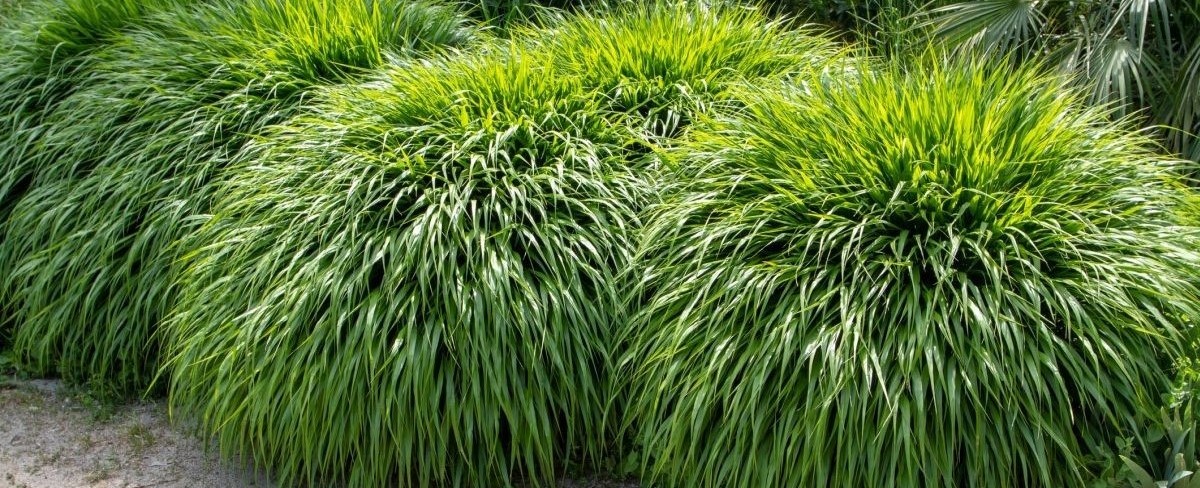
Hakonechloa, also known as Hakone grass, is a mesmerizing ornamental grass native to Japan. Its delicate and graceful appearance has made it a popular choice among gardeners and landscapers around the world. But there’s more to this plant than meets the eye.
In this article, we will uncover 15 unbelievable facts about Hakonechloa that will surely amaze and intrigue you. From its origins and unique features to its uses in landscaping and its ability to adapt to different climates, Hakonechloa is truly a fascinating plant worth exploring in depth.
So, get ready to delve into the captivating world of Hakonechloa and discover why this ornamental grass has captured the hearts of garden enthusiasts everywhere.
Key Takeaways:
- Hakonechloa is a stunning, low-maintenance ornamental grass that adds elegance to gardens, thrives in shade, and changes color throughout the seasons, providing year-round interest.
- With its delicate appearance and slow growth, Hakonechloa is perfect for erosion control, deer-resistant, and looks stunning near water features, making it a versatile and elegant addition to any garden.
Hakonechloa is a versatile ornamental grass.
Hakonechloa, also known as Japanese forest grass, is a stunningly beautiful and versatile ornamental grass that adds a touch of elegance to any garden or landscape.
It originates from the mountainous regions of Japan.
Hakonechloa is native to the mountains of Japan, particularly the Hakone region, from which it derives its name.
There are several varieties of Hakonechloa available.
There are different cultivars of Hakonechloa, each with its own unique characteristics and appearance, ranging from vibrant green to golden tones.
Hakonechloa thrives in shadier areas.
Unlike many other grasses, Hakonechloa prefers partial shade to full shade, making it an excellent choice for gardens with limited sunlight.
It has a delicate and graceful appearance.
The slender leaves of Hakonechloa sway gracefully in the wind, creating a sense of movement and beauty within the landscape.
Hakonechloa is low-maintenance.
Once established, Hakonechloa requires minimal care and attention, making it ideal for both novice and experienced gardeners.
It is a great choice for erosion control.
The dense root system of Hakonechloa helps stabilize soil, making it an effective option for preventing erosion on slopes or embankments.
Hakonechloa adds texture and contrast to gardens.
With its cascading foliage and gentle movement, Hakonechloa provides a wonderful texture and contrast when combined with other plants in garden beds or containers.
It changes color throughout the seasons.
During the warmer months, Hakonechloa displays vibrant green hues, which transition to stunning shades of gold and orange during autumn, adding interest to the garden.
Hakonechloa is deer-resistant.
Due to its strong aroma and unpalatable taste, Hakonechloa is not a preferred food source for deer and other browsing animals.
It can be grown in containers.
Hakonechloa is well-suited for container gardening, allowing you to enjoy its beauty on patios, balconies, or even indoors.
Hakonechloa looks stunning near water features.
The graceful appearance of Hakonechloa makes it an excellent choice for planting near ponds, streams, or waterfalls, complementing the tranquil setting.
It adds a touch of elegance to rock gardens.
Hakonechloa’s delicate foliage and cascading growth habit bring a sense of sophistication to rock gardens and rocky slopes.
Hakonechloa is a slow-growing grass.
While some grasses can be invasive, Hakonechloa grows at a slow pace, preventing it from taking over and becoming unruly in the garden.
It provides year-round interest.
Whether it’s the lush green foliage in the summer or the vibrant colors in the fall and winter, Hakonechloa offers visual interest throughout the year.
Conclusion
In conclusion, Hakonechloa is a fascinating plant that offers numerous benefits for both gardeners and nature enthusiasts alike. Its elegant and graceful appearance, vibrant colors, and versatile growth habits make it a popular choice for landscaping and garden design.From its origins in the mountains of Japan to its ability to thrive in various climates, Hakonechloa is truly a remarkable plant. Its low-maintenance nature and ability to add year-round interest to gardens make it a valuable addition to any outdoor space.Whether you’re looking to create a serene Japanese garden, add texture to a rockery, or enhance the beauty of a shady area, Hakonechloa is an excellent choice. Its unique characteristics and remarkable adaptability make it a standout plant that will undoubtedly captivate any observer.With its breathtaking beauty and ability to transform any space, Hakonechloa is truly an extraordinary plant that deserves its place in the spotlight.
FAQs
1. How tall does Hakonechloa grow?
Hakonechloa typically grows to a height of around 12-18 inches, making it a perfect choice for ground covers or front-row plantings in gardens.
2. Can Hakonechloa tolerate full sun?
While Hakonechloa prefers partial shade, it can tolerate a few hours of direct sunlight each day. However, it is important to ensure that the soil remains consistently moist to prevent the plant from drying out.
3. How often should Hakonechloa be watered?
Hakonechloa requires regular watering to keep the soil consistently moist. It is best to water deeply but infrequently, allowing the soil to dry slightly between waterings.
4. Can Hakonechloa be grown in containers?
Yes, Hakonechloa can be grown in containers as long as the container has good drainage. It is important to choose a container that is wide but shallow to accommodate the spreading growth habit of the plant.
5. Does Hakonechloa require any special care?
Hakonechloa is relatively low-maintenance. However, it benefits from an annual application of compost or organic fertilizer in early spring to promote healthy growth. Regular trimming of any damaged or overgrown foliage is also recommended.
Hakonechloa's stunning beauty and versatility make it a must-have for any garden enthusiast. If you're looking for more inspiration, check out our articles on the renowned Chelsea Flower Show, where you'll find innovative garden design ideas. Discover practical tips and tricks in our landscaping facts article to transform your outdoor space. And don't forget to explore the enchanting world of perennial plants like Hepatica, which will add a touch of magic to your garden.
Was this page helpful?
Our commitment to delivering trustworthy and engaging content is at the heart of what we do. Each fact on our site is contributed by real users like you, bringing a wealth of diverse insights and information. To ensure the highest standards of accuracy and reliability, our dedicated editors meticulously review each submission. This process guarantees that the facts we share are not only fascinating but also credible. Trust in our commitment to quality and authenticity as you explore and learn with us.


